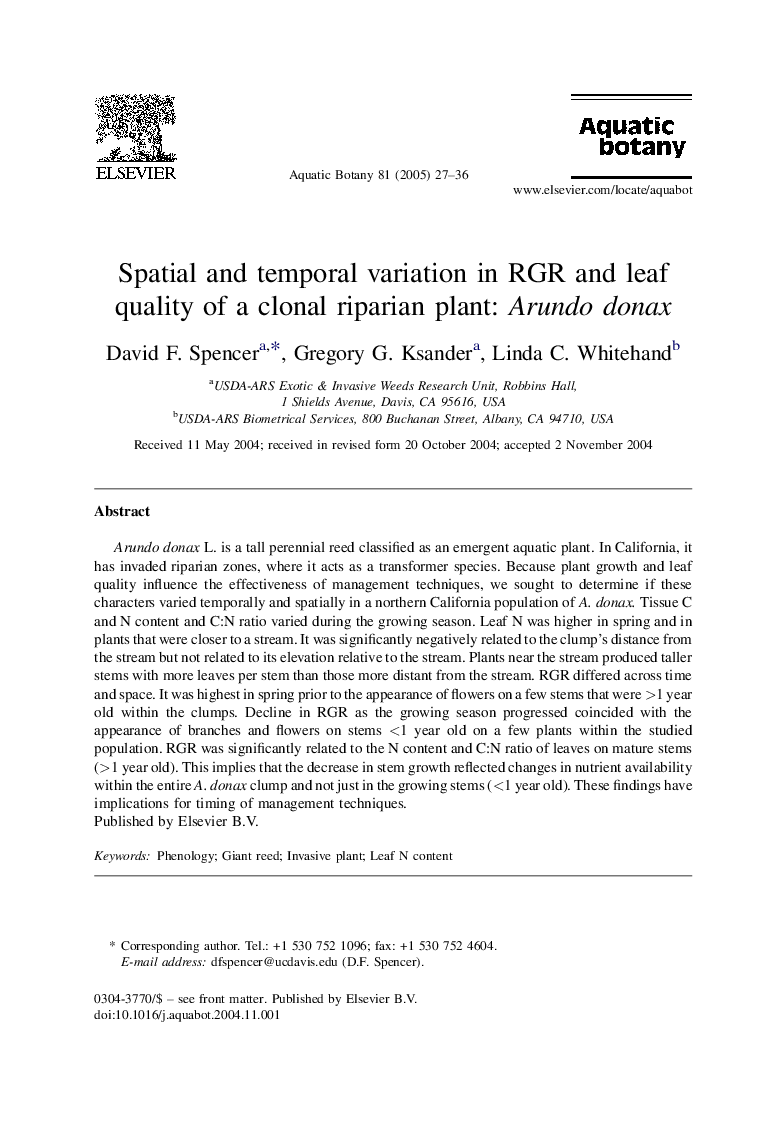| Article ID | Journal | Published Year | Pages | File Type |
|---|---|---|---|---|
| 9477546 | Aquatic Botany | 2005 | 10 Pages |
Abstract
Arundo donax L. is a tall perennial reed classified as an emergent aquatic plant. In California, it has invaded riparian zones, where it acts as a transformer species. Because plant growth and leaf quality influence the effectiveness of management techniques, we sought to determine if these characters varied temporally and spatially in a northern California population of A. donax. Tissue C and N content and C:N ratio varied during the growing season. Leaf N was higher in spring and in plants that were closer to a stream. It was significantly negatively related to the clump's distance from the stream but not related to its elevation relative to the stream. Plants near the stream produced taller stems with more leaves per stem than those more distant from the stream. RGR differed across time and space. It was highest in spring prior to the appearance of flowers on a few stems that were >1 year old within the clumps. Decline in RGR as the growing season progressed coincided with the appearance of branches and flowers on stems <1 year old on a few plants within the studied population. RGR was significantly related to the N content and C:N ratio of leaves on mature stems (>1 year old). This implies that the decrease in stem growth reflected changes in nutrient availability within the entire A. donax clump and not just in the growing stems (<1 year old). These findings have implications for timing of management techniques.
Keywords
Related Topics
Life Sciences
Agricultural and Biological Sciences
Aquatic Science
Authors
David F. Spencer, Gregory G. Ksander, Linda C. Whitehand,
